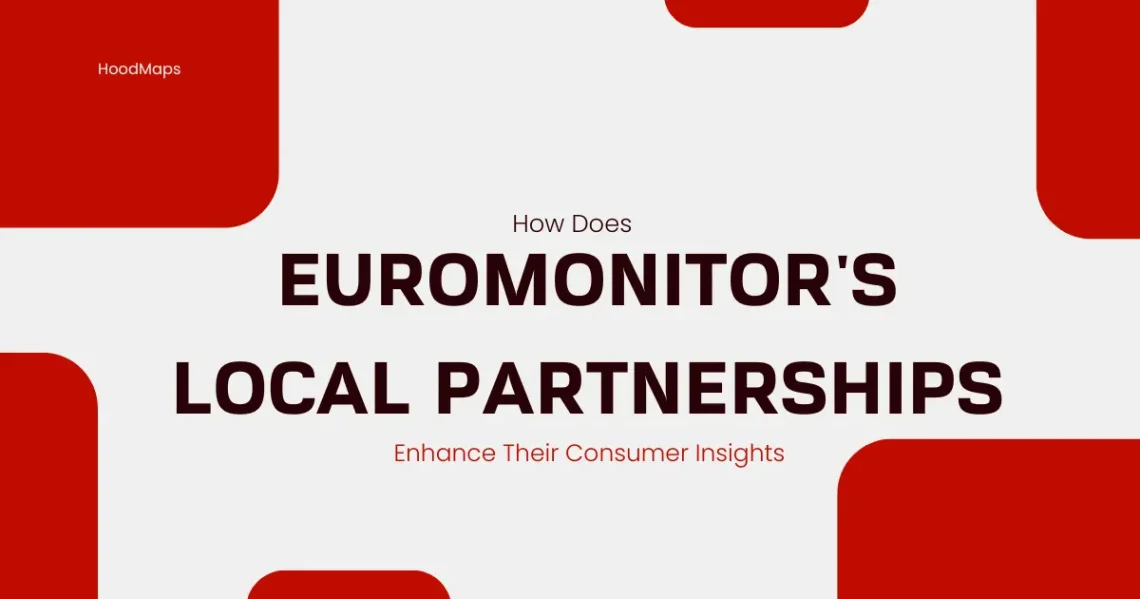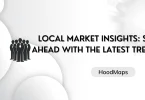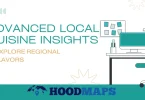Introduction – The Power of Local Context in Global Markets
Have you ever looked at a global report and felt like… something was missing? It’s not that the numbers are wrong. They’re not. But they often feel too wide, too detached from what’s really happening on the ground. That’s where local context comes in—and that’s why Euromonitor’s work with local partnerships is more important than ever.
See, global data can tell you what’s happening. Sales are going up, a product’s losing popularity, or a new category is emerging. But local insight tells you why. Why is bottled water booming in one country while barely noticed in another? Why do Gen Z shoppers in one city respond to ethical branding while others just want discounts? That kind of nuance doesn’t come from spreadsheets—it comes from people. Real people. Locals who live and breathe their market every day.
In an age where consumers are more diverse, fragmented, and unpredictable than ever, brands can’t afford to rely on generic insights. They need something deeper. They need context. That’s exactly what Euromonitor unlocks by tapping into local researchers, agencies, and cultural experts. It’s not about ditching global perspective—it’s about enriching it with human texture.
And let’s be honest—wouldn’t you rather make decisions based on what real people think and feel, instead of just clean-cut numbers? It’s a bit messier, sure. But it’s also more honest, more relevant… more real.
As we move through this piece, you’ll see how Euromonitor’s local partnerships breathe life into consumer data. We’ll explore how it works, why it matters, and how brands—from global giants to emerging startups—are using this approach to truly connect with people.
Ready to dig into the layers behind the data? Let’s go.
Why Global Data Alone Isn’t Enough
You know those perfectly polished global reports? The ones with neat graphs, tidy forecasts, and carefully selected buzzwords? They’re impressive—don’t get me wrong. But if you’ve ever tried to use them to make a local decision, you’ve probably felt that little pang of doubt. Like something just didn’t click.
That’s because global data, on its own, is like a map without street names. It shows the big picture, but it doesn’t tell you how people really live, shop, or think. Let’s say the report says “urban consumers are leaning toward sustainability.” Okay, but what does that mean in Lahore? Or Jakarta? Or Lima? Does sustainability mean reusable bags, or does it mean avoiding foreign brands to support local ones? Those layers get lost in translation when you rely solely on big, sweeping data sets.
Local behavior is full of contradictions and color. Sometimes, people say they care about eco-friendly packaging, but when money’s tight, they’ll go for whatever’s cheaper. Sometimes, what’s considered “premium” in one market is totally normal in another. These things don’t show up in global data because that data averages everything out—and in doing so, it dilutes the detail.
Euromonitor knows this. That’s why they don’t just stop at high-level numbers. They go deeper, working with partners who live in these communities and can explain the why behind the what. It’s not that global data is wrong. It’s just incomplete. Like reading half a book—you get the plot, but not the soul.
In a world where brands are expected to be personal and culturally aware, generic data just doesn’t cut it anymore. And honestly? It shouldn’t. People deserve to be understood, not just counted.
The Rising Importance of Hyper-Localized Consumer Behavior
There was a time when businesses could survive with broad strokes—target “millennials,” launch one campaign for “Asia,” or assume “urban consumers” think the same from Tokyo to Mumbai. But today? That kind of generalization just doesn’t fly. People are more informed, more expressive, and way more diverse in how they shop and live. And that’s where hyper-localized consumer behavior steps into the spotlight.
Let’s break it down: someone buying skincare in Seoul might be obsessed with the latest clean-beauty trend, while someone in Karachi might be more focused on sun protection and price. Both are buying the same type of product—but for completely different reasons, in totally different cultural and economic environments. That nuance is everything.
Hyper-local doesn’t mean just breaking down countries into regions. It means digging into cities, neighborhoods, even community identities. What festivals influence buying cycles? What slang shows up in advertising? What does “value for money” really mean to someone earning minimum wage versus a middle-class shopper? This kind of micro-detail matters. A lot.
Euromonitor understands that the real magic of market research lies in these subtleties. By partnering with locals—people who aren’t just watching the market but living it—they capture insights that big-picture analysts often miss. And that’s a huge advantage, especially for brands trying to stay relevant in fast-changing markets.
Here’s the thing—when brands respect the small things, people notice. They feel seen. They feel like a product or campaign was actually made for them, not just for some imagined “target audience.” That emotional connection builds loyalty, trust, and ultimately, stronger results.
So yeah, hyper-local might seem like a buzzword at first glance—but it’s really the foundation for smart, respectful, and effective marketing in today’s world.
What is Euromonitor and What Does It Do?
At first glance, Euromonitor might seem like just another data company. But dig a little deeper, and you’ll find it’s more like a storyteller—one that uses data to paint incredibly detailed portraits of how people live, shop, eat, and think around the world.
So, what exactly does Euromonitor do? In simple terms, it provides market research, industry analysis, and consumer insights across more than 100 countries. But that’s just the surface. Euromonitor breaks down complex markets into understandable, usable chunks of information. Whether it’s a deep dive into health-conscious trends in urban India or the rise of online grocery shopping in Mexico, they provide both the hard numbers and the narrative behind them.
Businesses rely on Euromonitor to answer questions like:
- Who’s buying our product?
- What trends are emerging in our industry?
- How do we position ourselves in a new market?
And Euromonitor doesn’t just guess. It collects data from a mix of sources—government records, on-the-ground surveys, interviews with industry professionals, and yes, local partnerships (more on that soon). Then, it organizes all that information into its well-known platforms, like Passport, which clients can explore and analyze in real time.
One of the most valuable things Euromonitor offers is foresight. Not just what’s happening now, but what might happen in the next few years—so brands can prepare, adjust, and move ahead of the curve.
To put it simply: Euromonitor is the tool big (and small) brands use when they want to understand their consumers, not just count them. It’s like the market whisperer behind some of the smartest business decisions you’ve probably seen without even realizing.
Key Industries and Sectors It Covers Globally
When we say Euromonitor covers “a lot,” we’re not just tossing out a vague claim—it genuinely operates across an impressive range of industries. From the clothes you wear to the food on your plate, from the phone in your hand to the vacation you’re planning—Euromonitor is probably tracking that market somewhere in the world right now.
Let’s start with Fast-Moving Consumer Goods (FMCG). This is one of their biggest arenas. Think beverages, packaged foods, personal care, and home care products. Companies in this space rely on Euromonitor to understand shifting preferences—like why oat milk is exploding in one region but not the other, or how inflation is changing detergent purchases.
Then there’s Retail and E-commerce. With the world shopping more online than ever before, Euromonitor’s insights here are crucial. They analyze everything from digital payment preferences to the rise of direct-to-consumer brands and what’s driving foot traffic back to physical stores in certain cities.
Travel and Tourism is another area they explore in detail. In a post-pandemic world, understanding how people travel, where they go, and what they’re willing to spend on experiences is gold for airlines, hotel chains, and tourism boards. And yes, they go deep—tracking even small shifts in leisure trends and local tourist spending.
Consumer Technology and Digital Services are increasingly important too. As our devices become smarter and more integrated into our daily lives, Euromonitor helps brands understand adoption rates, tech fatigue, and regional digital behaviors.
Beyond that, they cover health and wellness, luxury goods, packaging trends, automotive, and even pet care.
What makes their work even more valuable is the combination of global reach and local precision—ensuring insights are both wide-ranging and sharply focused. Whether you’re a CEO or a startup founder, there’s a good chance Euromonitor has data on exactly the industry you’re in—or hope to enter.
What Are Euromonitor’s Local Partnerships?
Think of Euromonitor’s local partnerships as its secret sauce—the not-so-obvious ingredient that makes its insights richer, more accurate, and way more relatable. You see, global research is valuable, no doubt. But without voices on the ground—real people who live in the market being studied—it’s easy to miss the heartbeat of local life. That’s exactly why Euromonitor actively builds relationships with local researchers, agencies, and cultural experts.
But what does this actually look like? Imagine a project studying snack food trends in Brazil. Sure, you could gather data from supermarkets and online reviews. But to really understand what’s popular—and why—you’d want someone who walks those aisles every week, who talks to real shoppers, who knows what kids are picking up after school. That’s where local partners shine.
These partnerships go beyond just helping collect data. They help interpret it. They spot nuances in behavior that outsiders might dismiss. They clarify why a certain product suddenly surged in popularity—or why a seemingly great product failed miserably. They even catch cultural shifts early, like how attitudes about health, identity, or status are influencing buying habits in subtle ways.
Local partners also help ensure that data isn’t being filtered through a foreign lens. What might seem “low engagement” in one culture might be completely normal in another. Without that cultural fluency, insights risk being misread—and businesses risk making bad calls.
So yeah, Euromonitor could technically run everything from afar. But they don’t. Because they know data without depth is just noise. These local partnerships are how they turn raw information into meaningful, human-centered insights that actually help businesses make smarter, more empathetic decisions.
How Euromonitor Builds and Maintains These Local Relationships
You can’t just parachute into a country, collect some data, and expect to understand its market. It doesn’t work like that. Euromonitor knows this, which is why building strong, long-term relationships with local partners is central to how they operate. These aren’t just quick transactions—they’re collaborations rooted in mutual trust and respect.
So how do they do it?
It usually starts with careful selection. Euromonitor doesn’t just look for anyone on the ground. They partner with individuals and organizations who have a deep, working knowledge of the culture, economy, and consumer behavior in their area. We’re talking local analysts, market researchers, academics, and even boutique consultancies who’ve been studying their industries for years.
Once the partnership begins, there’s constant communication. It’s not a one-off job. Euromonitor regularly trains their partners, shares expectations, and sets up quality control checks to make sure the data stays consistent across all regions. But they also listen. A big part of maintaining those relationships is treating local voices not as tools, but as collaborators whose input shapes the bigger picture.
They also provide resources and support—because let’s face it, doing research in a fast-changing local market can be tough. Whether it’s helping partners navigate new methodologies or adapting to sudden shifts (like, say, during a pandemic), Euromonitor works with them, not above them.
Most importantly, they don’t erase local identity—they celebrate it. The insights coming from the ground aren’t just “verified facts,” they’re stories, rich with detail and full of cultural texture. And when you value those stories, you naturally build relationships that last.
That’s how Euromonitor turns a global network into a living, breathing ecosystem of trust, knowledge, and mutual growth.
Benefits of Having Local Experts in Market Research
Let’s be real—no algorithm, no satellite view, no fancy dashboard can beat the insight of someone who lives and breathes the local market. That’s the superpower of local experts in market research. They’re not just feeding in data—they’re providing context, emotion, and stories behind the numbers. And for companies that truly want to connect with consumers, that’s everything.
So, what do these local experts actually bring to the table?
First, cultural fluency. Local researchers know the unwritten rules—what’s polite, what’s taboo, what gets people talking. They understand regional holidays, social habits, and even the slang that makes a marketing campaign relatable—or completely out of touch. Without them, brands risk sounding tone-deaf.
Then there’s consumer empathy. A spreadsheet won’t tell you why a low-income family buys powdered milk over fresh, or why a particular shoe brand has become a status symbol in a specific neighborhood. Local experts can walk into a market, talk to real people, and decode the why behind their choices. That depth just isn’t possible from afar.
They also provide agility. When trends shift suddenly—like during economic downturns or social movements—locals are the first to feel the change. Their real-time insights help businesses pivot fast, stay relevant, and avoid costly mistakes.
And let’s not forget trust. Consumers are more likely to open up to researchers who speak their language—literally and figuratively. That leads to more honest responses, richer interviews, and better data overall.
Bottom line: local experts are the bridge between raw information and real understanding. They humanize the numbers, challenge assumptions, and make sure insights are grounded in everyday reality—not just global trends. Without them, market research is just a shadow of what it could be.
How Do These Partnerships Improve Consumer Insights?
You know that moment when you read a report or see a marketing campaign and think, “Wow, they really get it”? That’s the magic of enhanced consumer insights—and it often comes directly from local partnerships. When Euromonitor works closely with people on the ground, the quality of the data they collect isn’t just better—it’s more real, more human, and way more usable for businesses trying to make smart decisions.
Local partners don’t just hand over facts. They add layers. For example, let’s say data shows that bottled water sales are declining in a Southeast Asian city. Without context, that’s just a dip in a line graph. But a local expert might explain that a new city-wide tap filtration system just launched, or that there’s growing awareness of plastic pollution. That kind of nuance shifts how a brand might respond—maybe switching focus to eco-friendly packaging instead of launching a flashy ad campaign.
Another benefit? Spotting emerging trends early. Locals are often the first to notice shifts in preferences. Maybe it’s a new food item gaining traction with teens, or a rise in digital payment adoption in rural areas. Global data can take time to catch up, but local partners catch it in the moment—helping Euromonitor give clients a competitive edge.
It also builds emotional depth into insights. Understanding what consumers are doing is one thing. But understanding how they feel about their choices? That’s next-level—and it’s something local researchers are uniquely positioned to uncover through focus groups, observations, and everyday conversation.
In short, these partnerships help Euromonitor do what machines and numbers alone can’t: tell the full story. They connect the dots between data points and human lives—making consumer insights not just smarter, but more empathetic and effective.
Examples of Consumer Insight Improvements from Local Partnerships
Real-world examples are where theory turns into something tangible. And when it comes to Euromonitor’s local partnerships, there are some powerful stories that show just how valuable this approach can be. These aren’t just data wins—they’re moments where businesses understood people better, all thanks to the boots on the ground.
Example 1: Health Trends in Southeast Asia
Euromonitor was researching shifts in the beverage market in Vietnam. The numbers showed declining soda sales—but it was the local partner who noticed a cultural trend behind it. Young adults were turning toward herbal drinks and teas, partly influenced by wellness content on regional social media and local influencers. This wasn’t just about “health” in the global sense—it was tied to traditional beliefs and modern digital habits. Thanks to this insight, several beverage companies pivoted to launch herbal and detox tea lines, which saw early success in urban markets.
Example 2: E-commerce Behavior in Nigeria
Another case came out of Nigeria, where online shopping seemed to be stalling despite infrastructure improvements. From a distance, that didn’t add up. But local researchers found that trust, not access, was the issue. People preferred to pay in cash after delivery because of fraud fears. With this insight, some e-commerce brands began offering “pay on delivery” as a primary option—leading to a jump in conversions and customer satisfaction.
Example 3: Packaged Foods in Argentina
Inflation was spiking, and consumers were buying less. But the local team noticed something interesting: people weren’t necessarily switching to cheaper brands—they were buying smaller packages of the same products. This helped brands rethink their pricing strategies by introducing mini-sizes instead of slashing prices or compromising quality.
These examples show how local knowledge doesn’t just clarify data—it transforms it into actions that actually resonate. When Euromonitor and its partners work together, businesses don’t just make informed choices—they make right ones.
Conclusion: Why Local Partnerships Matter More Than Ever
In a world where data is everywhere, context is the game-changer. Anyone can pull numbers from a dashboard, but not everyone can understand what those numbers actually mean in someone’s daily life. That’s why Euromonitor’s local partnerships aren’t just a smart strategy—they’re an absolute necessity in today’s dynamic, fast-moving global markets.
These partnerships bring a level of depth, empathy, and authenticity that cold data simply can’t provide on its own. Local experts don’t just gather information—they live it. They see the early signs of change, they hear the whispers before the trends shout, and they know when something’s off before it becomes a problem in the reports.
Whether it’s understanding cultural preferences, decoding emotional responses, or recognizing subtle shifts in behavior, these insights only come when research includes people who are there. Euromonitor gets this. They don’t treat local voices as background noise—they amplify them, turning those perspectives into global business strategies.
And as markets become more localized, nuanced, and unpredictable—these relationships will only grow more essential. It’s not just about predicting consumer behavior anymore. It’s about respecting it, understanding it, and responding with relevance and care.
So the next time you read a well-informed trend report or see a product hit the right note in a local market, there’s a good chance someone on the ground made that possible. That’s the power of local partnerships. That’s the strength behind Euromonitor’s consumer insights.
FAQ: How Do Euromonitor’s Local Partnerships Enhance Consumer Insights?
Q1: Why does Euromonitor rely on local partnerships?
Because local experts provide on-the-ground context that data alone can’t reveal. They help decode cultural nuances, emotional drivers, and real-world behaviors that make insights more accurate and actionable.
Q2: What kind of local partners does Euromonitor work with?
Euromonitor partners with experienced local researchers, analysts, consultants, and sometimes even niche agencies or academics who specialize in regional markets.
Q3: How do these partnerships improve data quality?
Local experts help collect more honest, relevant, and timely data. They also interpret trends through a cultural lens—something machines or remote researchers can’t do effectively.
Q4: Can these partnerships predict emerging trends?
Yes. Local partners often spot new trends early because they live in the culture. They notice changes in consumer behavior, attitudes, or preferences before they show up in traditional reports.
Q5: Are there any risks with local partnerships?
Like any collaboration, clear communication and training are essential. But Euromonitor has strong systems in place to ensure consistency, quality, and alignment across all their local networks.





